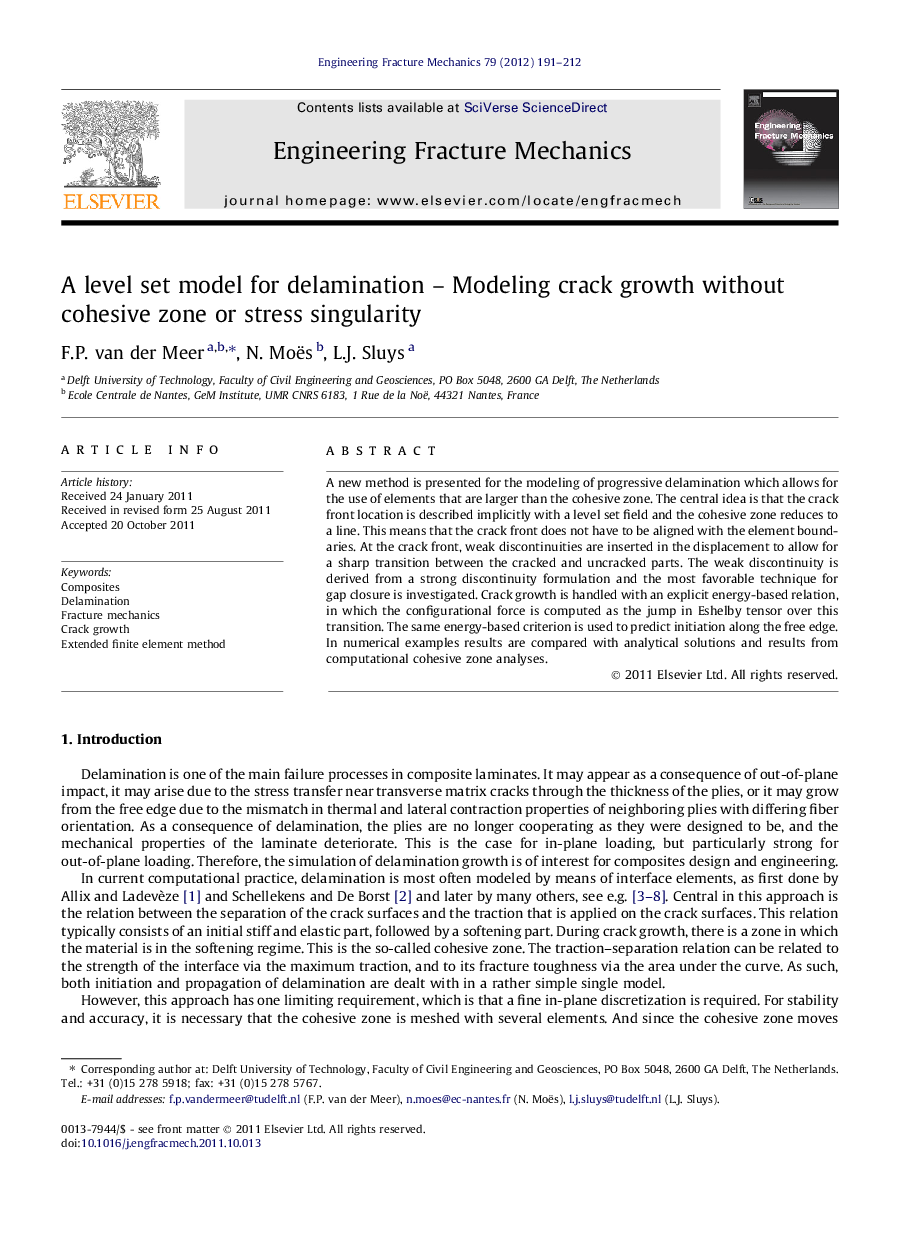| Article ID | Journal | Published Year | Pages | File Type |
|---|---|---|---|---|
| 767475 | Engineering Fracture Mechanics | 2012 | 22 Pages |
A new method is presented for the modeling of progressive delamination which allows for the use of elements that are larger than the cohesive zone. The central idea is that the crack front location is described implicitly with a level set field and the cohesive zone reduces to a line. This means that the crack front does not have to be aligned with the element boundaries. At the crack front, weak discontinuities are inserted in the displacement to allow for a sharp transition between the cracked and uncracked parts. The weak discontinuity is derived from a strong discontinuity formulation and the most favorable technique for gap closure is investigated. Crack growth is handled with an explicit energy-based relation, in which the configurational force is computed as the jump in Eshelby tensor over this transition. The same energy-based criterion is used to predict initiation along the free edge. In numerical examples results are compared with analytical solutions and results from computational cohesive zone analyses.
